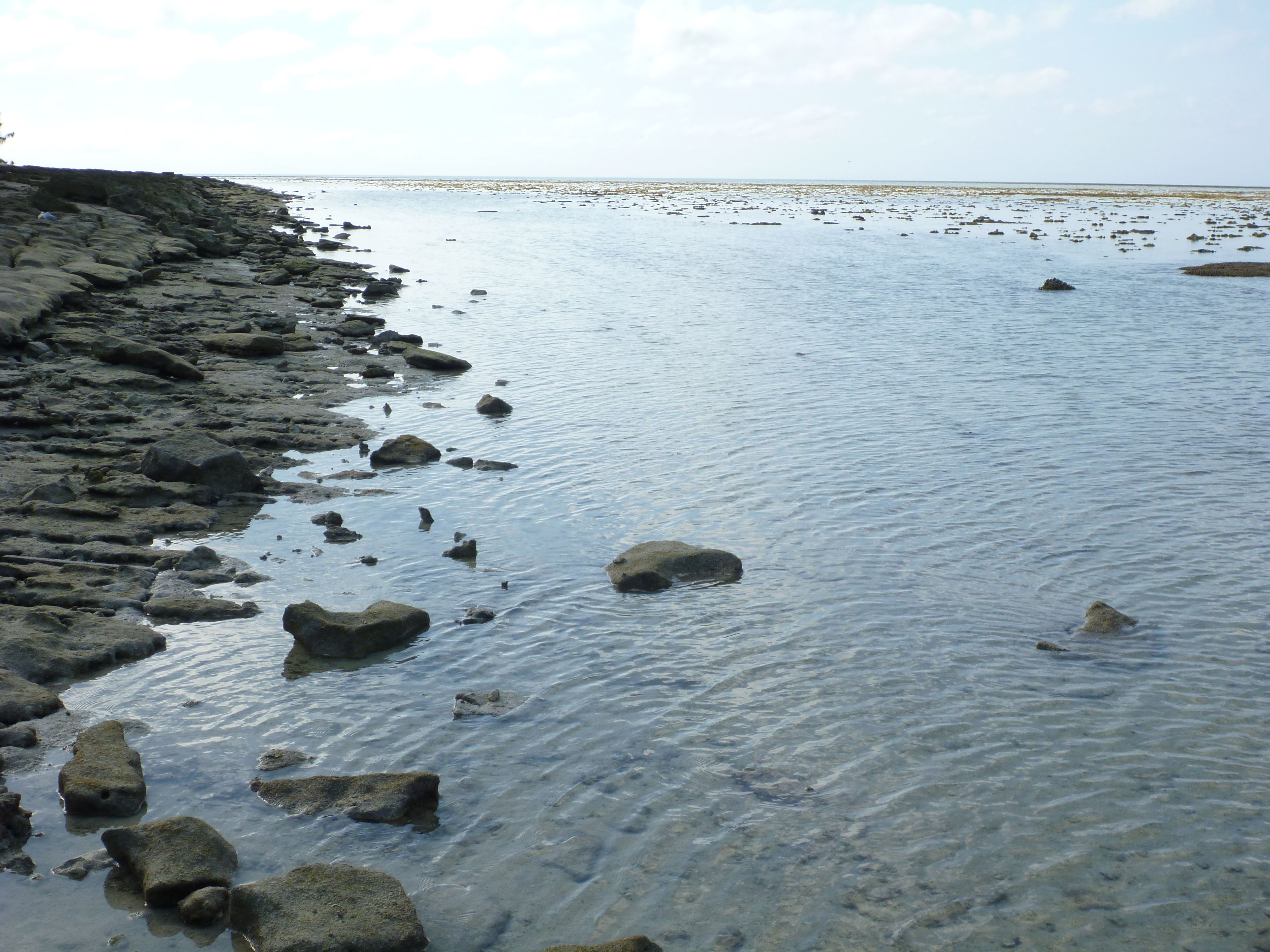Ecology
Scintilla spp. is one of the least studied geneses within the Galeommatidae which in turn is one of the most understudied group of bivalves (Oliver & Holmes 2004). As such the classification of this organism to species level has proven difficult and so inferences on its biology, ecology and life history must be made based at the genus level. I attempted to fill this gap in the knowledge regarding this organism and determined through my studies (details in Local Distribution - Mini Report) the local distribution of Scintilla spp. on Heron Island. I determined that the majority of organisms inhabit the first 5m of the intertidal (Figures 1 & 2). Some individuals were located further out towards the reef crest however numbers were minimal with a high degree of spread.

 
Figure 1: Intertidal zone at Heron Island

Figure 2: Intertidal zone at Heron Island
They were primarily found on the underside of flat coral rubble that was still submerged at low tide. The coral rubble on which they were found supported diverse communities with numerous colonial ascidians, sponges, chitons, spaghetti worms and other bivalves (Figure 3). This indicates that Scintilla spp. may be a late settler, requiring some sort of environmental cue from the coral rubble community in order to settle.

Figure 3: Coral boulder habitat on which Scintilla spp. were found
It was observed during the study that Scintilla spp. attaches loosely to the substrate (coral rubble) on its ventral surface, similar to a gastropod.This indicates that the bivalve attaches using a byssus which is explained further in Anatomy and Physiology.
|